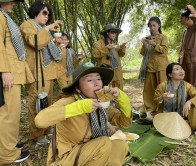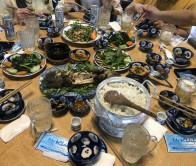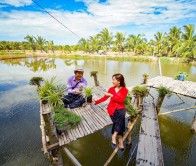Mekong Introduction
The Mekong is one of the world’s great rivers. It is the world’s 10th-longest river and the 7th-longest in Asia. Its estimated length is 4,909 km , and it drains an area of 795,000 km2, discharging 475 km3 of water annually .
From the Tibetan Plateau this river runs through China’s Yunnan province, Burma, Laos, Thailand, Cambodia and Vietnam. Laos, Thailand, Cambodia and Vietnam established the Mekong River Commission in 1995 to assist in the management and coordinated use of the Mekong’s resources. In 1996 China and Burma became “dialogue partners” of the MRC and the six countries now work together within a cooperation framework.
Names
In English the river is called “the Mekong River”, derived from “Mae Nam Khong”, a term of both Thai and Lao origin. In the Lao-Thai toponymy, all great rivers are considered “mother rivers” signaled by the prefix “mae”, meaning “mother”, and “nam” for water. In the Mekong’s case, Mae Nam Khong means Khong, Mother of Water. “Khong” is derived from the Sanskrit “ganga”, meaning the Ganges.
Many Northern Thai and Laos locals refer to it as the “River Khong”. Such is the case with the Mae Nam Ping in Chiang Mai which is known as the “Ping River”. The Tonle Sap in Cambodia is a similar example – where Tonle translates as “Great lake or river”, making the Tonle Sap River an unnecessary repetition of what is in fact the “Sap River”.
Course
The Mekong rises in the “Three Rivers Area” on the Tibetan Plateau in the Sanjiangyuan National Nature Reserve as the Lancang, together with the Yangtze and Salween Rivers. It flows southwest through Yunnan Province through the Three Parallel Rivers of Yunnan Protected Areas in the Hengduan Mountains. After leaving China, it flows southeast and forms the border of Burma and Laos for about 100 kilometres then turns southwest to form briefly the border of Laos with Thailand.
The Mekong then flows east and south into Laos for some 400 kilometres and defines the Laos-Thailand border again for some 850 kilometres as it flows east, turning south through central Southeast Asia, passing through the capital of Laos, Vientiane. The Mun River’s confluence with the Mekong occurs right before it crosses into Cambodia, where it receives the Sap River, flowing by Phnom Penh, the capital of Cambodia. The Mekong slows as it enters Vietnam, where it divides into nine channels of the Mekong Delta, emptying into the South China Sea.






